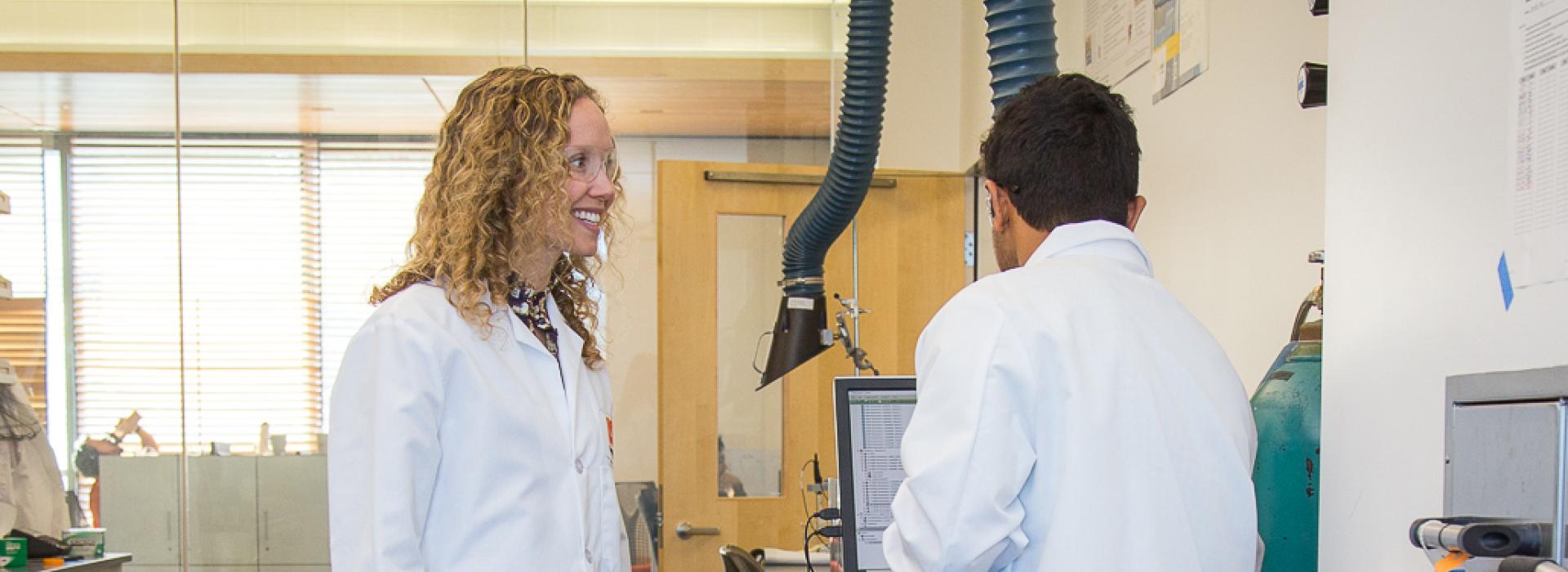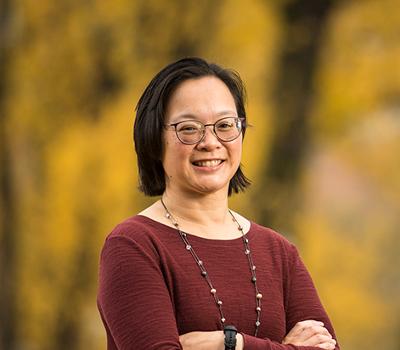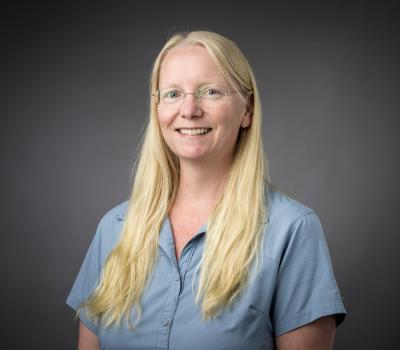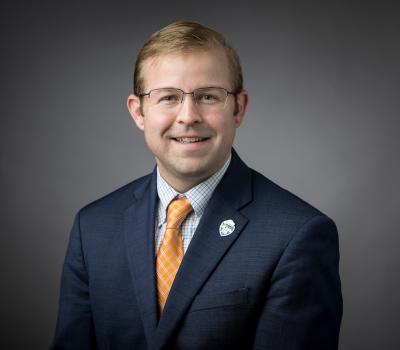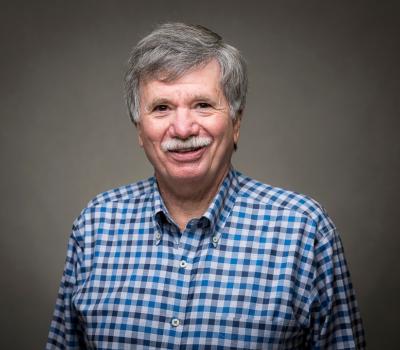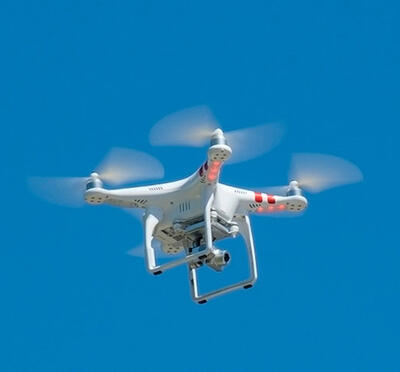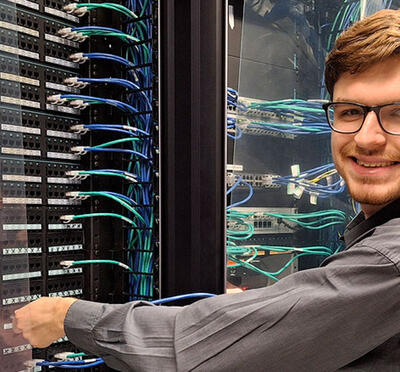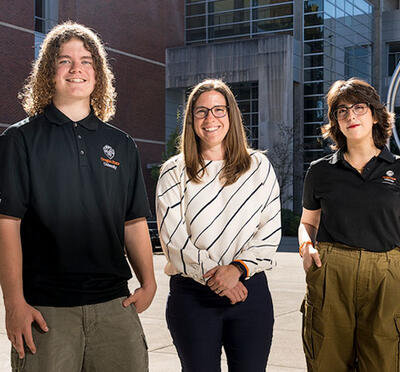Our faculty are the heart of the College of Engineering’s pursuit of excellence. These are the people in whom our research and education missions live and breathe. Not only are the college’s faculty shaping the future by driving discovery and innovation — in the areas of artificial intelligence, robotics, advanced manufacturing, clean water, materials science, renewable energy, and many others — they are teaching and mentoring tomorrow’s leaders. Above all, faculty excellence fosters student success.
There is no more effective means to recruit and retain top academic talent than by establishing endowed faculty positions. Endowments are substantial gifts of income-earning capital, managed to provide support in perpetuity. Generous, visionary donors have created around 150 endowed deanships, chairs, professorships, faculty fellow, or faculty scholar positions at Oregon State University, 25 of which sit in the College of Engineering.
Endowed deanships and chairs are catalysts for transformation and achievement. They confer prominence and prestige upon the scholar-leaders who hold them, thus enabling the university to attract and support top senior talent — or to retain faculty who have risen to the top of their field here at Oregon State. Then there are endowed professorships, which honor accomplished faculty members who have earned a high measure of distinction. Finally, endowed faculty scholar positions reward and support rising stars, helping to attract promising talent.
By creating a faculty endowment, donors provide a steady flow of discretionary funds, year after year. For the holders of endowed positions, that means greater freedom to innovate. Endowment income gives them financial flexibility to pursue promising new ideas in a variety of ways — such as purchasing specialized research tools and participating in conferences with other top experts from around the globe. These funds also support graduate research assistants and help to create opportunities for undergraduate research experience.
In the pages that follow, you will learn more about an innovative program to create new endowed positions, why donors invest in faculty excellence, and 10 of our outstanding endowed faculty members.
PROVOST’S Faculty Match Program
Over the summer, Oregon State launched a matching program that offers donors a remarkable opportunity to support outstanding faculty — today and for generations to come. Through the Provost’s Faculty Match program, donors who create endowed faculty funds with gifts of $250,000 or more will leverage matching funds for the college or unit where the position is based.
Funded by the Office of the Provost at $2.5 million ($500,000 per year over five years), the program has the potential to inspire more than $12.5 million in private support for faculty. Previous iterations of the match program, in 2010 and 2012, established 39 new endowed faculty positions throughout the university and secured $33.6 million in new funding.
Here’s how the Provost’s Faculty Match program works (learn more):
- All endowed faculty position funds of $250,000 or more that support instructors or assistant/associate/full professors are eligible. Commitments may support existing endowed positions or create new ones.
- Multi-year pledges, outright support, current use, and endowment are eligible for the Provost’s Match.
- The program launched July 1 and will run until available funds have been designated.
INCREASE YOUR IMPACT
Contact us to learn how to leverage your gift through the Provost’s Faculty Match.
Kim Kono
Director of Development
OSU Foundation
kim.kono@osufoundation.org, 503.273.4427
Scott A. Ashford
Kearney Dean of Engineering
scott.ashford@oregonstate.edu, 541.737.5232
College of Engineering Endowed Positions
Why we support faculty endowments.
Mike and Judy Gaulke
Chair in Electrical
Engineering and Computer Science
Michael (’68 B.S., Electrical Engineering) and Judith (’65 B.S., Home Economics) Gaulke both enjoyed long, productive careers and have been happily married for 53 years.
Michael Gaulke, who earned his MBA from Stanford Office of Graduate Education of Business in 1972, went on to become a successful business executive in Silicon Valley. He retired in 2009 as chief executive officer of Exponent Inc. after 17 years with the company. Previously, he served in numerous leadership roles at Raynet Corp., Spectra-Physics, and McKinsey & Company. Judith Gaulke flew around the world with Pan Am as a flight attendant before going to work for Sunset magazine as its cookbook editor and later starting her own food styling business. She is now a full-time artist.
The couple have made significant philanthropic gifts, with health care and education as their priorities. In 2012 the Gaulkes made a $3.5 million commitment to create the School of Electrical Engineering and Computer Science’s first endowed faculty fund.
“We started out with Professor John Wager, which was a great start for the endowed chair,” Michael Gaulke said. “Then, upon John’s retirement, we got the opportunity to move that chair to endow the head of the School of EECS, and to use that to help attract Tom Weller to Oregon State. Both John and Tom have made immense contributions to the school, and we hope to watch that success continue.”
The Gaulkes offer their experience as inspiration to others who want to give back.
“I would just hope that others who are fortunate are able to go down a path like Judy and I have,” Gaulke said. “That they will feel some gratitude for how they got there and remember Oregon State in that process.”
Carol Kuse Ehlen, Nick Ehlen, and Henry Ehlen
James and Shirley Kuse Chair in Chemical Engineering
James R. Kuse (’55 B.S., Chemical Engineering) achieved great success in his career, as both a chemical engineer and businessman. He and his partners acquired Georgia Pacific’s chemical division in 1984 to create the Georgia Gulf Corporation. Kuse grew that company into a major manufacturer of commodity and specialty chemicals, serving as its chairman (1984-2001), CEO (1985-1991), and president (1984-1989).
He and his wife, Shirley, established the James R. Kuse Family Foundation in 1989, to share their wealth by supporting causes close to their hearts. In doing so, they created a philanthropic legacy that now spans three generations. Their daughter, Carol Ehlen, is the foundation’s managing trustee, heading a board of family members, including her two adult sons, Nicholas and Henry.
“Certainly, OSU always was big in my dad’s heart, and both of my parents were proud to support the university,” Carol Ehlen said. “Independent of the foundation, they made a lead gift to the Valley Library campaign, and they endowed a chair in chemical engineering. That was just something they did on their own.”
The James and Shirley Kuse Chair in Chemical Engineering was established in 1997. Today it supports research and teaching in chemical engineering that is of critical importance to the profession and to Oregon. In addition, Shirley Kuse created a fellowship under her own name in support of women in science and engineering. Although James and Shirley Kuse are now both deceased, the foundation they created continues to support these causes in their honor.
“As our generation has gotten involved, Henry’s and mine, we’re building on what my grandparents did,” Nicholas Ehlen said. “All of our trustees are typically involved in the organizations we support, through board service or volunteering. Beyond that, we’ve tried to carry on what my grandparents established as their priorities.”
Jay and Leslie Culbertson
Culbertson Faculty Scholar
Jay Culbertson has been a Beaver from birth, the son of two Oregon State graduates. He was proud to follow in their footsteps, earning his degree in business administration and management in 1972. But engineering is also in his blood, Culbertson says. His father was a mechanical engineer, and one of his uncles was a structural engineer.
And engineering was always at the core of his business. After earning his degree and completing an apprenticeship, Culbertson joined and eventually took the helm of Temp Control Mechanical, a Portland-based HVAC contractor.
“We hired predominantly young interns from Oregon State, mostly in construction engineering management and mechanical engineering,” he said. “So, engineering has really been a passion of mine.”
Culbertson helped to grow TCM into one of the largest mechanical contractors in the Pacific Northwest, before it became a wholly owned subsidiary of Southland Industries in 2014. Culbertson retired as an executive vice president of Southland in 2019. A longtime donor and advocate for the College of Engineering, Culbertson says supporting faculty excellence is critical to its continued success.
“I look at Oregon State, and the talent we hired over the years, and each year the students have ratcheted up,” he said. “It has always been a good school. Now it’s a great school. To continue that momentum, the College of Engineering needs to be able to recruit top talent to the faculty.”
Darry and Betty Callahan
Callahan Faculty Scholar in Chemical Engineering
Darald “Darry” Callahan (’64 B.S., Chemical Engineering) has been a supporter of Oregon State University, and the College of Engineering in particular, for decades. A member of the university’s board of trustees and former board chair of the OSU Foundation, he has also served on advisory boards for the College of Engineering and the School of Chemical, Biological, and Environmental Engineering. His service has been matched by his generosity over the years, with numerous, substantial gifts that have benefited the college in many ways.
“I started out 30 years ago thinking that the best way I could help was with construction projects,” Callahan said. “After a while I thought, ‘I got through school on scholarships, and I really appreciated that.’ So maybe it’s better to help students. So, I set up a scholarship fund. Then I thought, ‘Well, gosh, the faculty is awfully important, too.’ Without them, none of this works, and they do such a great job. So, we set up the faculty scholar position.”
Callahan and his wife, Betty, set up the Callahan Faculty Scholar in Chemical Engineering in 2011, to help support young faculty who show exceptional promise.
“It’s been a lot of fun because I’ve gotten to know the people who have held the faculty scholar position, and they’re all just wonderful people. Most recently, Kelsey Stoerzinger says that it helped her establish her own research program. So, it’s just been really great to see that it’s helping and it makes a difference.”
CH2M Hill Professor in Civil Engineering
Dan Cox’s research centers on understanding how coastal communities can improve their resilience against extreme hazards like hurricanes and tsunamis and adapt to long-term threats like sea-level change. For example, he measures the destruction that storm surges can cause and strives to develop better building standards so that future construction can be built to survive the power of storm-generated waves.
His work could have major implications for the Pacific Northwest, which faces the near certainty of an extreme earthquake and tsunami from the Cascadia subduction zone.
“Only fairly recently — the late 1980s — did people begin to acknowledge the danger presented by the Cascadia subduction zone, and coastal communities have taken a long time to come to grips with that reality,” Cox said, adding that many parts of the U.S. — and the world — also face perils from hurricanes and extreme storm surges.
Another important research area is green infrastructure, which involves combining natural areas, like wetlands and floodplains, with existing gray infrastructure, like submerged sills or revetments commonly constructed of rock or concrete. Such green-gray hybrids will provide coastal communities with a buffer against the effects of sea-level rise and allow them to adapt to these changes while maintaining healthy ecosystems and economies.
Cox added that having an endowed position offers opportunities that would otherwise not be available, such as leading a team to organize a national conference in Washington, D.C., in 2023 to discuss the threat of coastal disasters and how to face them, and to develop a “research roadmap” to prioritize needs and establish collaborative networks.
Glenn Willis Holcomb Professor in Structural Engineering
Judy Liu’s primary research interest is finding new ways to design earthquake-resistant, steel-frame buildings that can return rapidly to service after seismic events.
Most buildings are designed for a life-safety performance objective, which means that the occupants can safely exit a building after an earthquake. But a building and its components might sustain significant damage, resulting in economic losses associated with repair costs and business downtime. Designing to a higher performance objective allows people to return to damaged buildings more quickly and help communities bounce back after earthquakes.
“I’d like to think that, in some small way, I can contribute to community safety and resilience,” Liu said.
Another one of her research interests is quantifying wave impact loads on buildings, whether from a storm surge or a tsunami. The effort is a collaboration with structural and coastal engineering colleagues.
The resilience of U.S. coastal communities relies on infrastructure performance. As the populations of these communities continue to grow, improved models for predicting wave impact loads are needed to inform rational, reliable, and economical structural design. Liu’s intended research outcomes in this arena include improvements to current design guides and standards, and public safety benefits.
She noted that having an endowed position opens the door to expanded research and teaching. The additional resources can be used to support small, exploratory studies to test out new ideas or, perhaps, to examine new technologies intended to increase student learning and engagement.
Callahan Faculty Scholar in Chemical Engineering
Kelsey Stoerzinger has a passion for renewable energy. Her research focuses on using specialized materials, called catalysts, to facilitate chemical reactions. Those reactions can be used to store energy, transform molecules into valuable feedstocks, and recycle precious natural resources.
“We design catalysts to make these reactions run more efficiently and selectively when driven by renewable electricity,” Stoerzinger said. “One specific example is turning renewable electricity and seawater into hydrogen, a green fuel and chemical precursor. We see this as particularly important for Oregon with its more than 350 miles of shoreline.”
The materials that Stoerzinger works with include thin-layer films of metal oxides. Creating these materials and characterizing their functionality requires the use of advanced instruments and techniques not available at Oregon State. With the support from the Callahan Faculty Scholar endowment, Stoerzinger and students from her lab have traveled to grow catalyst films at Pacific Northwest National Laboratory and characterize them at the Advanced Light Source at Lawrence Berkeley National Laboratory.
“An endowed position has allowed me to explore new areas of research in their earliest stages and to support students traveling to national laboratories to conduct experiments with one-of-a-kind instrumentation,” Stoerzinger said. “It’s also helped me leverage other research funding opportunities through its flexible student support.”
College of Engineering Dean’s Professor
Lewis Semprini is an internationally recognized expert with more than three decades of experience. His research focuses on various strategies for bioremediation — using microorganisms to break down dangerous environmental contaminants into smaller, more benign molecules. Of chief concern is a class of synthetic chemicals known as volatile organic compounds, or VOCs. Increasingly problematic are emerging co-contaminants, such as 1,4-dioxane, a likely human carcinogen.
Semprini’s work also includes the development of passive remediation systems involving the encapsulation of micro-organisms in hydrogel beads.
“We’ve created a process called long-term aerobic cometabolism, which is an enclosed, passive, self-sustaining system for groundwater remediation,” Semprini said. “The beauty of this is that everything happens inside the beads.”
Having an endowed position has advanced Semprini’s work by helping to cover the costs of specialized research equipment. To perform his research, Semprini routinely needs to precisely measure many different types of contaminants at very low concentrations. This requires the use of delicate and costly instruments.
“For my research to be successful, I need to maintain and modify instruments in my laboratory, which has over $2 million worth of analytical equipment,” Semprini said. “The funding from this endowed position helps keep this equipment in top running condition.”
College of Engineering Dean’s Professor
Julie A. Adams conducts a wide range of research that addresses human interaction with autonomous systems; piloted civilian and military aircraft; and commercial, consumer, and industrial systems. Her research — grounded in robotics applications for domains such as first response, archaeology, oceanography, the national airspace, and the U.S. military — emphasizes human factors, distributed artificial intelligence, swarms, robotics, and human-machine teaming.
“Robots in general have the potential to greatly benefit and enhance society, and that impact becomes even greater in the dangerous or uncertain domains in which I focus,” Adams said. “Deploying multiple robots that can intelligently collaborate with and adapt to humans while collecting information or completing tasks — such as dropping fire retardant on wildland fires — has the potential to minimize damage, save lives, and protect property.”
Her work could also lead to applications that have a significant impact on daily life, such as applications that help humans safely supervise multiple delivery drones across an urban area.
Adams also analyzes the schooling behavior of fish and bee colonies, which are very resilient to changes in their environments. Her study of these systems, and the corresponding development of artificially intelligent algorithms, will allow robot collectives to be more resilient to the unpredictable conditions that occur during natural disasters, thus increasing their utility to first responders.
She noted that her endowed position provides the ability to explore new research directions that can be used to secure research funding, student education, and support research platform development.
Kearney Faculty Scholar
The primary focus of Jennifer Parham-Mocello’s research is finding new ways to broaden the participation of K-12 students, first-year college students, and teachers in computational thinking by using less intimidating and more inclusive approaches to introduce computer science. These new methods delay programming instruction and instead draw on real-world examples to explain computational concepts, such as how the instructions and rules for playing a game are an algorithm.
“Current teaching methods typically introduce students and teachers
to computer science through programming, which can be frustrating and lead to an instant distaste for the field,” said Parham-Mocello. “Yet teachers who introduce computer science without programming still tend to use computer science examples rather than more accessible analogies to explain computing.”
Students and teachers who do not immediately connect with programming or computer science examples are put at a disadvantage. But opportunities are rare for teachers to develop their pedagogical content knowledge within the context of computation. Parham-Mocello hopes to change this by developing explicit guidance for how to teach the material.
She believes her work will lead to more diversity among students entering computational disciplines; more K-12 teachers who adopt computational thinking into their classrooms; and more comfort among teachers who adopt and teach computer science curriculums.
Nesbitt Faculty Scholar in Energy Engineering
Chris Hagen’s primary research interests include advanced internal combustion engines, unconventional fuels, control systems, and sensor development.
Unconventional fuels — for example, biomass, tailored liquid hydrocarbons, hydrogen, and renewable natural gas — are an important part of any future portfolio of clean energy options from domestic sources. Hagen assesses the performance of these novel fuels and modifies internal combustion engines to accommodate their use. He also designs control systems and sensors for the engines.
“Our main goal is enabling energy conversion from one form to another in a safe, clean, and sustainable manner,” Hagen said.
Another research interest of Hagen’s is residential energy applications. He and his lab are currently exploring the viability of renewable natural gas and hydrogen fuel for use in home generators. He is also developing a hybrid powertrain for unmanned aircraft that combines the benefits of an electric motor and gas engine that will deliver easier takeoffs and longer flight times.
“The endowment set up by the Nesbitt family provides opportunities for our speculative research, as well as gap funding,” Hagen said. “Of equal importance, the endowment has supported graduate student tuition for the past five years, which has been critical for my students, in one way or another, having great post-graduation opportunities.”
Richard and Gretchen Evans Scholar in Humanitarian Engineering
Nordica MacCarty’s research centers on the co-design and impact assessment of technologies to meet basic needs in communities around the world aligned with the United Nations’ Sustainable Development Goals. Efforts in her lab typically focus on meeting household energy needs using renewable and locally available biomass fuels.
Poor communities are disproportionately affected by air pollution. Inefficient and incomplete burning of biomass fuels for cooking and home heating generates smoke, which can cause serious health problems. Exposure to biomass smoke from cooking is the second leading cause of death for women globally. In the U.S., many tribal and other resource-deprived communities suffer from poor health resulting from air pollution created by heating homes with certain wood fuels.
To alleviate these unnecessary environmental and health impacts, MacCarty is leading the effort to design and perfect cleaner-burning cookstoves for the developing world, and heating stoves that burn cordwood more efficiently for markets in the U.S.
“My endowed position allows me to bring in students to work on otherwise unfunded projects in humanitarian engineering, as well as to collaborate with partners and support their work in places like Nepal, Uganda, and Malawi,” said MacCarty, who is the 2020 Oregon State International Service Award winner. “There is so much work to do and often not a lot of funding available to do it, so this endowment is incredibly helpful to engage students in these efforts.”
Henry W. and Janice J. Schuette Professor in Nuclear Science and Engineering
Wade Marcum leads an experimental research group that designs, builds, and tests commercial-scale experiments in support of the safe and robust advancement of nuclear technology. His research interests include nuclear reactor thermal hydraulics, computational fluid dynamics, reactor safety, flow-induced vibration, fluid structure interactions, and advanced reactor design.
“My research focus tends to be rather applied,” Marcum explained. “It is specific to nuclear reactor thermal hydraulics, supporting the safety of existing and advanced reactor concepts.”
This research is backed by a variety of industry and government sponsorship, with the aim of transitioning nuclear technologies from early concepts to a stage where they’re ready for development and deployment — from light-water-reactor pumps and fuel assembly testing to sodium-reactor component and instrument testing. Marcum says the Schuette endowment has opened avenues to expand the impact of his research group within the nuclear industry.
“Thanks to the generous donation by Henry and Janice Schuette, my endowed professorship has afforded opportunities — through engagement with the nuclear science and engineering community in service roles, sponsored by the Schuettes and in their name — to exploring new topical research opportunities that advance the mission of my research group.”
Henry W. and Janice J. Schuette Chair in Nuclear Engineering and Radiation Health Physics
Brian Woods has extensive experience in the energy industry. He has worked as an engineer at the U.S. Department of Energy, within the Office of Environmental Restoration, and as a nuclear safety analyst at Dominion Energy’s Innsbrook Technical Center, near Richmond, Virginia.
His current research interests include experimental and computational fluid dynamics, nuclear reactor thermal-hydraulics, and reactor safety, with a primary focus on advanced reactor design, including water-cooled, helium-cooled, and liquid salt-cooled.
“This work is important to provide a carbon-free source of electricity that also minimizes the risk of any type of accident,” Woods said. “The potential applications include production of electricity, desalination of seawater, and production of hydrogen — a potential carbon-free replacement for gasoline or natural gas.”
Woods says the support of the Schuette endowment allows him time and resources to explore novel ideas at early stages of development, and then push for funding that can make these ideas a reality.
“For example, the endowment funding has allowed my team to look at using the experimental equipment that we use to examine advanced reactor designs to explore high-temperature energy storage devices,” he said.
